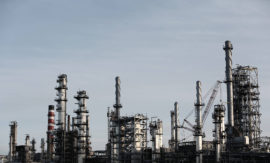Intended learning outcomes: Present processor-oriented master data and give examples of resources.
In the process industry, product design simultaneously means the design of processes. There is no clear separation between these two steps, as is the case for mechanical production, for example. Product design is based entirely on the knowledge of the technologies that can be used in production processes. In mechanical production, there are technologies and machines for cutting, milling, electroerosion, and other operations, but the technologies involved in the process industry utilize biological, chemical, or physical reactions.
The object technology describes process-independent properties and conditions, that is, all the knowledge contained in a given technology.
The object process, on the other hand, describes the possible input, the effect of the process, and the resulting output independently of a given technology.
See also Section 17.4.1. A process may be implemented using different technologies, and, conversely, a technology may be used in various processes.
The object process with technology describes the technique that can be implemented during the actual production process.
It is this business object in logistics that ultimately appears in the production structure as a basic manufacturing step.
Resources are all the things that are identified, utilized, and produced in a value-adding process. The term is used in a generalized way here, that is, to represent products, materials, capacities (including personnel), facilities, energy, and so on.
One peculiarity of the process industry is that all resources are regarded as being of equal priority. Thus, materials are no more important than capacity or production equipment. This is reflected in the fact that a production structure is expressed solely in terms of resources, and all the possible types of resources are described in greater detail by appropriate specialization. Figure 8.2.1.1 shows the business object resource as a generalization of the business object item in Figure 1.2.2.1 and the business objects discussed in Section 1.2.4.
Fig. 8.2.1.1 Processor-oriented master data: examples of resources.
As the business object item is a specialization of the object resource, an assembly is a specialization of the object intermediate product. A product is a specialization of a producible resource, and a component is a specialization of a consumable resource. Capacity, as described in Section 1.2.4, is also shown as a further specialization of the object resource. Capacity can mean employees or automated equipment, such as machines and reactors. The latter resources are grouped with tools, devices, and the like, under the term production equipment. They describe the investment in physical plant that is required for the manufacturing process. A further resource is energy, such as electricity, steam, and so on. These resources can also be described as items. They are often produced as by-products.
Course section 8.2: Subsections and their intended learning outcomes

8.2 Processor-Oriented Master and Order Data Management
Intended learning outcomes: Produce an overview on processes, technology, and resources. Present the process train: a processor-oriented production structure. Disclose lot control in inventory management.

8.2.1 Processes, Technology, and Resources
Intended learning outcomes: Present processor-oriented master data and give examples of resources.

8.2.2 The Chocolate Production — An Example of a Processor-Oriented Production Structure
Intended learning outcomes: Describe the production structure in chocolate production. Explain the various manufacturing steps and stages in chocolate production.

8.2.2b The Process Train — A Formalized Processor-Oriented Production Structure, and The Recipe
Intended learning outcomes: Explain the formalized process train with stages and basic manufacturing steps. Identify the recipe.

8.2.3 Lot Control in Inventory Management
Intended learning outcomes: Describe the steps of lot control in inventory management. Identify the batch ID.
